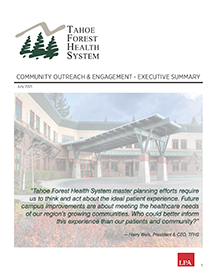The knee joint is the largest joint in the body. Like the ankle and elbow, the knee is a hinged joint that bears the weight of the body and allows for standing and walking. The lower part of the femur, or thighbone, joins the top of the tibia, or shinbone, along with the patella, or kneecap, to form the knee. The bony components are held together and cushioned by various soft tissues, such as the anterior and posterior cruciate ligaments and cartilage.
The knee joint can become compromised with wear and tear through rheumatoid arthritis, post-traumatic arthritis due to injury, or degenerative joint disease, also known as osteoarthritis. All forms of knee arthritis entail the deterioration of cartilage in a person’s knee, causing bone-on-bone pain and, as a result, debilitation.
Partial or total knee replacement surgery, also known as knee arthroplasty, is often the last hope for patients suffering from the chronic pain associated with osteoarthritis and other forms of joint degeneration.
How do I know if I need total knee replacement surgery?
You may require surgical treatment such as a knee replacement if you have bone or soft-tissue loss in the knee joint, or if the joint is becoming unstable due to arthritis or a severe injury.
You should consult with an orthopedic surgeon to discuss knee replacement if you have been experiencing any of the following:
- Bone-on-bone sensation
- Decreased range of motion and stiffness
- Joint instability in the knee
- Knee joint feels wobbly or out of place
- Medications or injections have a limited effect on reducing inflammation or pain
- Unable to carry out necessary and daily functions because of your knee issue
- Unable to sleep through the night due to knee pain
- Unable to walk without a device, such as a cane or walker
Only an orthopedic surgery practice should evaluate you for a direct anterior total hip replacement, partial or total knee replacement, or shoulder replacement surgery.
Procedures available at Tahoe Forest Orthopedics & Sports Medicine
Partial and total knee replacements, including custom-designed knee implants, are available at Tahoe Forest Hospital, a UC Davis Rural Center of Excellence. Using the latest techniques in multimodal pain control, including regional nerve blocks to minimize postoperative pain, most patients walk on the day of surgery and are discharged the following day.
Total knee replacement
A traditional total knee replacement is the most common treatment for severe knee osteoarthritis. This procedure requires an incision to be made in the front of the knee to expose the joint before damaged cartilage, other soft tissues, and/or bone are removed and replaced with knee prostheses. To create the new joint, one prosthetic component is attached to the bottom of the femur and the other is attached to the upper part of the tibia. The patella may also be replaced or resurfaced before the incision is closed.
Customized knee implants
Custom-fit knee implants entail using an MRI or CT scan to generate a 3-D model of a patient’s knee and designing an implant to conform exactly to the damaged surface of the joint. It’s meant to reduce the chances of failure, and it requires less removal of bone and tissue, which can ease recovery and rehabilitation.
Partial knee replacement
Partial knee replacement, also known as unicompartmental knee replacement, is a knee replacement surgery that involves replacing or resurfacing only part of the joint. Given that a partial knee replacement is less extensive than a total knee replacement, there is less invasion of the joint and surrounding structures, and it is often accompanied by a quicker, less involved recovery. Partial knee replacement is usually recommended for young, active patients whose arthritis or joint damage is not yet severe.
Another form of partial knee replacement is called patellofemoral replacement, where only the kneecap is resurfaced or replaced if arthritis damage is limited to this area.
Revision knee replacement
Artificial joints used in primary total knee replacement may have a lifespan that requires an additional surgery if the implant has worn out or if there have been other complications with the implant, such as dislocation or infection. The procedure performed to correct any problems with an artificial joint is called revision joint replacement surgery.
If you suffer from ongoing knee pain because of arthritis, it may be time to consider knee replacement surgery. We use multimodal pain control to minimize your postoperative pain, allowing you to walk right after surgery. We use the most advanced knee equipment and surgical techniques available, with a minimal hospital stay.
What to expect at your consultation
Prior to developing a treatment plan or performing a knee replacement, your surgeon will determine the source of your chronic pain. Your surgeon will order an X-ray and may also need you to schedule a CT or MRI scan. These scans will help your surgeon diagnose your condition and determine where the damage is located in and on the joint as well as the extent of the damage.
Your knee replacement surgeon may want you to undergo nonsurgical treatment methods before recommending total knee replacement surgery, such as joint injections, physical therapy, over-the-counter anti-inflammatory medications, or prescribed pain medications. You may also need to try activity modification to improve your symptoms and avoid further damage.
What to expect during and after recovery
The length of your hospital stay will depend on which surgical procedure you underwent as well as your age, overall health, and the extent of your joint damage. After a total knee replacement, you should be able to stand and walk with support the day after surgery. If your procedure was performed on an outpatient basis, you should be able to move around the day of your procedure and be released home.
Recovering from a partial or total knee joint replacement procedure frequently involves physical therapy with a certified physical therapist and low-impact exercises. Most patients require six to eight weeks of rehabilitation to build strength to use their new knee after a total knee replacement. Customized and partial knee replacements often have a shorter recovery and rehabilitation post-surgery.
For the best possible outcome, you will need to attend all follow-up appointments and avoid high-impact activities, which could damage your joint prostheses or shorten the lifespan of the new joint components. Currently, knee implants last an average of 15 – 20 years.
Partial and total knee replacement are considered safe elective procedures. However, there is a potential risk of infection, blood clots, and other complications, as with any surgery. Choosing a highly skilled surgeon for your joint replacement is one of the best things you can do to reduce your risks and optimize your results. He or she will be well versed in the procedure and will help develop a treatment plan suited to your individual needs.
Exceptional care begins at Tahoe Forest Orthopedics & Sports Medicine
At Tahoe Forest Orthopedics & Sports Medicine, our team of dedicated orthopedic experts is here for you. Our specialty-trained and knowledgeable knee replacement surgeons are backed by the latest state-of-the-art technology and have extensive experience to bring you the very best in orthopedic care. Our knee doctors have the surgical and nonsurgical expertise you need to reach your goals.
If you are experiencing knee pain due to a chronic condition, like knee arthritis, and are considering knee replacement or other treatment options, call (530) 587-7461 to schedule an appointment with one of our expert knee surgeons or make an appointment request. We offer three convenient locations in Truckee, California, and Incline Village, Nevada: Tahoe Forest Orthopedics & Sports Medicine, Tahoe Forest Sports Medicine & Therapy Services, and the Incline Village Community Hospital.


